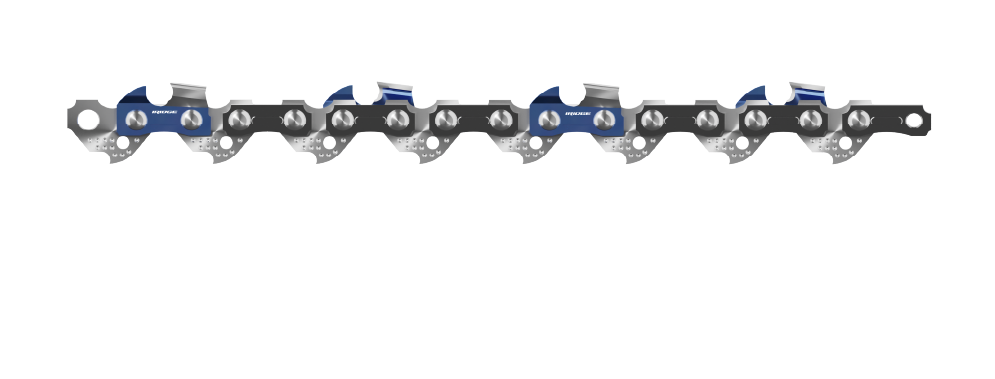Choosing the right chainsaw chain is essential for safe, efficient, and effective cutting. Whether you are a professional logger or a homeowner doing occasional yard work, the correct chain makes all the difference. But with so many types, sizes, and specifications, selecting the right chainsaw chain can be confusing. This guide will help you understand the key factors to consider when buying a chainsaw chain to ensure it fits your saw and meets your cutting needs.
1. Understand Your Chainsaw’s Specifications
The most important starting point is knowing the specifications of your chainsaw. Chainsaw chains are not universal — they come in different sizes and configurations to match specific saws.
Chain Length: Measured in inches or centimeters, this is the length of the cutting chain that fits around the chainsaw bar. It must match the bar length exactly.
Pitch: Pitch refers to the distance between three consecutive rivets divided by two. It determines the size of the chain’s drive links and how the chain meshes with the sprocket. Common pitch sizes include 1/4”, .325”, 3/8”, and .404”.
Gauge: This is the thickness of the drive links that fit into the guide bar groove. Common gauge sizes are .043”, .050”, .058”, and .063”. It must match the bar groove width.
Number of Drive Links: The total number of drive links (the links that sit inside the bar groove) defines the chain length in terms of how many links it has.
2. Check Your Chainsaw Manual or Bar
Your chainsaw manual is the best source of exact information about the chain size and type that fits your saw. It will specify the correct chain pitch, gauge, and length.
If the manual is missing, you can check the guide bar itself. Most chainsaw bars have the chain specifications stamped or printed on them, usually near the mounting area or along the bar.
3. Match Chain Pitch and Gauge Exactly
The chain’s pitch and gauge must precisely match your saw’s bar and sprocket. Using the wrong pitch or gauge can cause poor performance, increased wear, or even safety hazards like the chain derailing.
Pitch: If the pitch is too large or too small, the chain won’t fit the sprocket correctly.
Gauge: If the gauge is too thick, the chain won’t fit into the bar groove; if too thin, it will be loose and unsafe.
4. Choose the Right Chain Type for Your Cutting Needs
Chainsaw chains come in various types based on the shape of the cutters, their cutting style, and application:
Full Chisel Chain: Has squarecornered cutters that cut aggressively and fast. Ideal for professional use and hardwoods but requires frequent sharpening and is less forgiving.
SemiChisel Chain: Features roundedcorner cutters that provide smoother cutting and stay sharper longer. Good for general use and dirty or frozen wood.
Low Profile Chain: Designed for safety, these chains have smaller cutters and lower kickback risk, ideal for homeowners and beginners.
Skip Chain: Has fewer cutters spaced farther apart for fast cutting on largediameter wood but less smooth on smaller wood.
Micro Chisel Chain: Offers a balance between cutting speed and durability, common in many modern saws.
5. Consider Your Cutting Material
Different chains are better suited for different types of wood and cutting conditions:
Hardwood: Use full chisel or micro chisel chains for fast, aggressive cuts.
Softwood: Semichisel chains are effective and last longer.
Dirty or Frozen Wood: Semichisel chains perform better as they resist dulling.
Limbing and Pruning: Low profile or safety chains reduce kickback risk.
6. Look for Quality and Brand
Invest in a highquality chain from a reputable brand. Highquality chains last longer, cut cleaner, and are safer. Some wellknown brands include Stihl, Oregon, Husqvarna, and Carlton.
Avoid cheap, unbranded chains as they may be poorly manufactured, wear quickly, and increase the risk of accidents.

7. Consider the Chain Pitch and Bar Length Together
When replacing a chain, the bar length and chain pitch must be compatible. For example, a 16inch bar with a 3/8” pitch requires a chain specifically designed for those specs. A mismatch leads to poor fit and dangerous operation.
8. How to Measure Chain Length
If you can’t find the manual or bar markings, you can measure chain length by counting the number of drive links. This number helps identify the correct replacement chain.
9. Maintenance and Sharpening Compatibility
Choose a chain that matches your sharpening tools and maintenance routine. Some chains require special files or grinding tools. If you prefer easy maintenance, choose chains compatible with common sharpening systems.
10. Safety Features
Some chains come with builtin safety features like low kickback design or special teeth shapes to reduce the risk of dangerous kickbacks. This is important if you are a beginner or work in challenging environments.
11. Price vs. Performance
While cheaper chains may be tempting, consider overall value. A higherquality chain often lasts longer and performs better, saving money and frustration in the long run.
Summary Checklist Before Buying a Chainsaw Chain:
Know your chainsaw’s bar length.
Identify the chain pitch and gauge (from manual or bar).
Match the number of drive links.
Choose the chain type based on your cutting needs (full chisel, semi chisel, low profile, etc.).
Opt for reputable brands.
Consider safety features if you’re a beginner.
Check compatibility with your sharpening tools.
Balance price with quality and durability.
Selecting the right chainsaw chain is crucial for optimal performance and safety. By understanding your chainsaw’s specifications and matching them with the correct chain pitch, gauge, length, and type, you can ensure efficient cutting and prolong your saw’s lifespan. Whether tackling firewood, pruning, or professional logging, the right chain makes all the difference.




